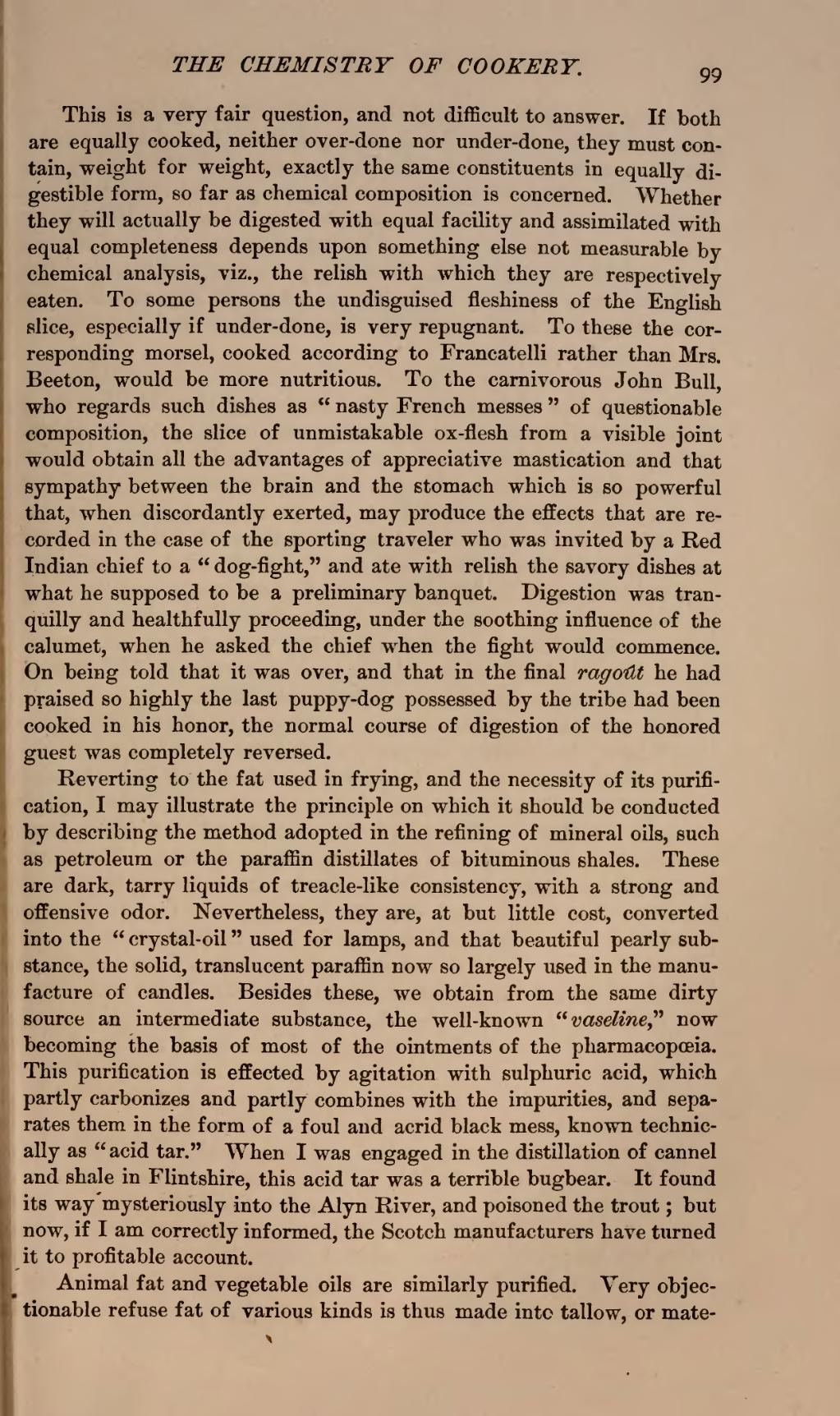This is a very fair question, and not difficult to answer. If both are equally cooked, neither over-done nor under-done, they must contain, weight for weight, exactly the same constituents in equally digestible form, so far as chemical composition is concerned. Whether they will actually be digested with equal facility and assimilated with equal completeness depends upon something else not measurable by chemical analysis, viz., the relish with which they are respectively eaten. To some persons the undisguised fleshiness of the English slice, especially if under-done, is very repugnant. To these the corresponding morsel, cooked according to Francatelli rather than Mrs. Beeton, would be more nutritious. To the carnivorous John Bull, who regards such dishes as "nasty French messes" of questionable composition, the slice of unmistakable ox-flesh from a visible joint would obtain all the advantages of appreciative mastication and that sympathy between the brain and the stomach which is so powerful that, when discordantly exerted, may produce the effects that are recorded in the case of the sporting traveler who was invited by a Red Indian chief to a "dog-fight," and ate with relish the savory dishes at what he supposed to be a preliminary banquet. Digestion was tranquilly and healthfully proceeding, under the soothing influence of the calumet, when he asked the chief when the fight would commence. On being told that it was over, and that in the final ragoût he had praised so highly the last puppy-dog possessed by the tribe had been cooked in his honor, the normal course of digestion of the honored guest was completely reversed.
Reverting to the fat used in frying, and the necessity of its purification, I may illustrate the principle on which it should be conducted by describing the method adopted in the refining of mineral oils, such as petroleum or the paraffin distillates of bituminous shales. These are dark, tarry liquids of treacle-like consistency, with a strong and offensive odor. Nevertheless, they are, at but little cost, converted into the "crystal-oil" used for lamps, and that beautiful pearly substance, the solid, translucent paraffin now so largely used in the manufacture of candles. Besides these, we obtain from the same dirty source an intermediate substance, the well-known "vaseline" now becoming the basis of most of the ointments of the pharmacopœia. This purification is effected by agitation with sulphuric acid, which partly carbonizes and partly combines with the impurities, and separates them in the form of a foul and acrid black mess, known technically as "acid tar." When I was engaged in the distillation of cannel and shale in Flintshire, this acid tar was a terrible bugbear. It found its way mysteriously into the Alyn River, and poisoned the trout; but now, if I am correctly informed, the Scotch manufacturers have turned it to profitable account.
Animal fat and vegetable oils are similarly purified. Very objectionable refuse fat of various kinds is thus made into tallow, or mate-
